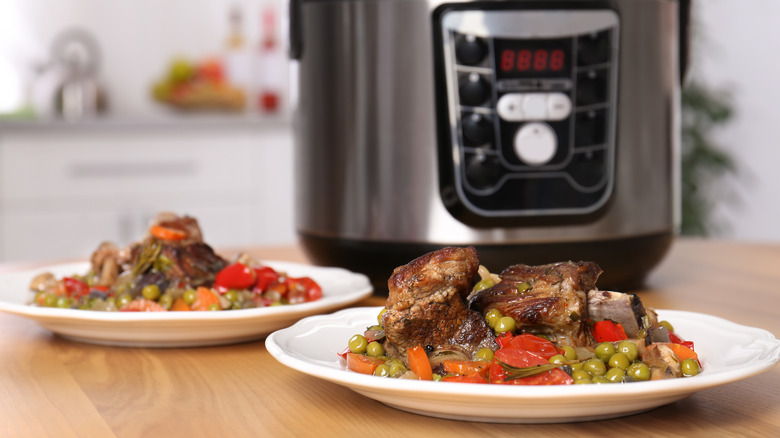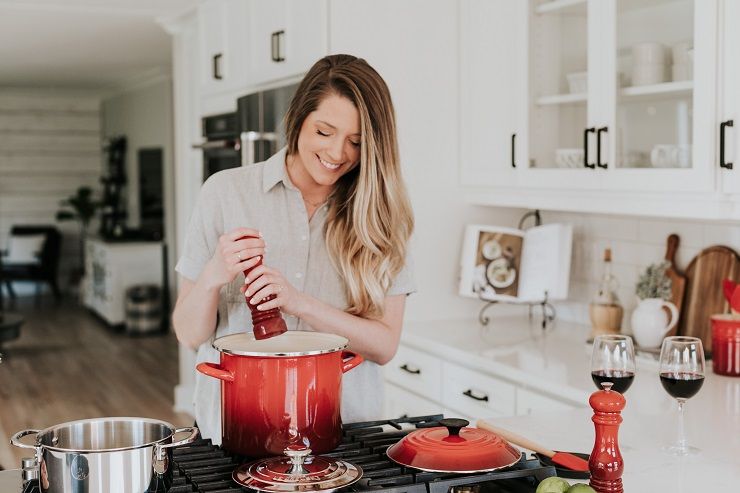Mastering the Art of Cooking Sticky Rice in a Pressure Cooker
Written By James Morgan
If you've ever wondered how to cook sticky rice in a pressure cooker, you're in the right place! Sticky rice, also known as glutinous rice, is a staple in many Asian cuisines. However, achieving that perfect texture can be challenging. This article provides a comprehensive guide on cooking sticky rice in a pressure cooker, a method that simplifies the process and guarantees fantastic results.

Why Use a Pressure Cooker for Sticky Rice?
Using a pressure cooker to make sticky rice offers several advantages. Firstly, it significantly reduces the cooking time compared to traditional methods, making it a convenient option for busy individuals. Secondly, a pressure cooker provides consistent results by maintaining the precise temperature and pressure needed for achieving the desired sticky texture. Lastly, it's an energy-efficient way to cook, as it uses less heat and water.

Ingredients Needed
- 2 cups of glutinous rice
- 2 1/2 cups of water
- 1/2 teaspoon of salt

Step-by-Step Guide on How to Cook Sticky Rice in a Pressure Cooker
Step 1: Rinsing the Rice
Begin by thoroughly rinsing the glutinous rice under cold water. This step is essential as it removes excess starch from the rice grains, preventing them from becoming too sticky. Place the rice in a fine-mesh strainer and rinse until the water runs clear. Skipping this process can result in overly sticky or mushy rice.
Step 2: Soaking the Rice
Once rinsed, transfer the rice to a bowl and cover it with water. Soak the rice for at least 30 minutes. Soaking helps the rice absorb water and begin to soften, which ensures even cooking and contributes to the stickiness. For even better results, you can soak the rice for up to 4 hours. This step is essential to achieve the best texture.
Step 3: Preparing the Pressure Cooker
While the rice is soaking, prepare your pressure cooker. Make sure it's clean and in good working condition. Place the inner pot inside the pressure cooker, plug it in, and set it aside. This step ensures that your equipment is ready to go as soon as the rice is prepped.
Step 4: Adding Rice and Water to the Pressure Cooker
Drain the soaked rice and transfer it to the pressure cooker. Add 2 1/2 cups of water and 1/2 teaspoon of salt. Stir everything well to ensure the salt is evenly distributed. Adding the right amount of water is crucial for achieving the perfect consistency of sticky rice.
Step 5: Setting the Pressure Cooker
Lock the pressure cooker lid in place and set it to cook at high pressure. Set the timer for 12 minutes. The pressure cooker will take a few minutes to reach the desired pressure before the actual cooking time begins. This is the beauty of the pressure cooker: it does most of the work for you while ensuring the rice cooks evenly.
Step 6: Natural Pressure Release
Once the cooking time is complete, allow the pressure to release naturally. This usually takes about 10 minutes. Releasing the pressure naturally helps the rice to finish cooking evenly and prevents it from becoming too dry or too mushy. Avoid using the quick-release function, as it can disrupt the cooking process and lead to inconsistent results.
Step 7: Fluffing the Rice
After the pressure has completely released, carefully remove the lid. Use a fork to fluff the sticky rice gently. This helps separate the grains and release any remaining steam. Fluffing is crucial for achieving the perfect texture and ensuring that the rice is well-cooked throughout.
Step 8: Serving the Sticky Rice
Your sticky rice is now ready to be served! Whether you're using it for sushi, pairing it with your favorite dishes, or simply enjoying it on its own, the perfectly cooked sticky rice from your pressure cooker will elevate any meal. Transfer the rice to a serving bowl and enjoy.

Tips for Perfect Sticky Rice
Tip 1: Use the Right Rice
It is essential to use glutinous rice, also known as sticky rice or sweet rice, for this recipe. Regular long-grain or jasmine rice will not yield the same sticky and chewy texture. Look for glutinous rice at your local Asian grocery store or order it online for the best results.
Tip 2: Mind the Water Ratio
Using the correct water-to-rice ratio is crucial for perfect sticky rice. The ratio provided in this recipe is a good starting point, but feel free to adjust it slightly based on your preference for texture. Too much water can make the rice mushy, while too little water can make it dry and undercooked.
Tip 3: Consistent Soaking Time
Consistency is key when it comes to soaking the rice. Soak the rice for the same amount of time each time you cook it to ensure the texture remains consistent. If you prefer softer sticky rice, soak it longer; if you like a firmer texture, reduce the soaking time slightly.
Health Benefits of Sticky Rice
Sticky rice is not only delicious but also offers several health benefits. It's a good source of carbohydrates, which provide energy. Additionally, sticky rice contains essential nutrients such as fiber, protein, and vitamins. However, because it has a high glycemic index, it's best enjoyed in moderation, especially for individuals managing blood sugar levels.
Different Ways to Enjoy Sticky Rice
Sticky Rice with Mango
One of the most popular ways to enjoy sticky rice is with fresh mango. This classic Thai dessert is a delightful combination of sweet sticky rice, ripe mango slices, and a drizzle of coconut milk. It's a refreshing and delicious treat that's perfect for any occasion.
Sticky Rice Dumplings
Sticky rice dumplings, also known as zongzi, are a traditional Chinese dish often enjoyed during the Dragon Boat Festival. These dumplings are made by wrapping sticky rice with various fillings such as meat, beans, or nuts in bamboo leaves and then steaming or boiling them. They are savory, flavorful, and incredibly satisfying.
Sushi Rolls
Sticky rice is an essential component of sushi rolls. Its sticky texture makes it easy to mold and shape, allowing you to create beautifully crafted sushi rolls with various fillings such as fish, vegetables, and seafood. Making sushi at home can be a fun and rewarding culinary experience.
Conclusion
Learning how to cook sticky rice in a pressure cooker can transform your culinary repertoire and provide you with a versatile ingredient that pairs well with myriad dishes. This guide has walked you through the process step-by-step, ensuring you achieve perfect results every time. From soaking the rice to fluffing it at the end, each step is crucial for achieving that perfect sticky texture that's beloved in many cuisines.
Whether you're making a traditional Asian dish, experimenting with new recipes, or just want a simple yet delicious side dish, sticky rice cooked in a pressure cooker will not disappoint. With the convenience and consistency provided by a pressure cooker, you can enjoy perfect sticky rice every time without the guesswork.
If you're looking to elevate your cooking even further, ensure your kitchen is equipped with the right tools. Here are a few recommended items to make your sticky rice cooking experience even better:
And don't forget to take care of your cookware with these essential cleaners:
As an Amazon Associate, I earn from qualifying purchases.



